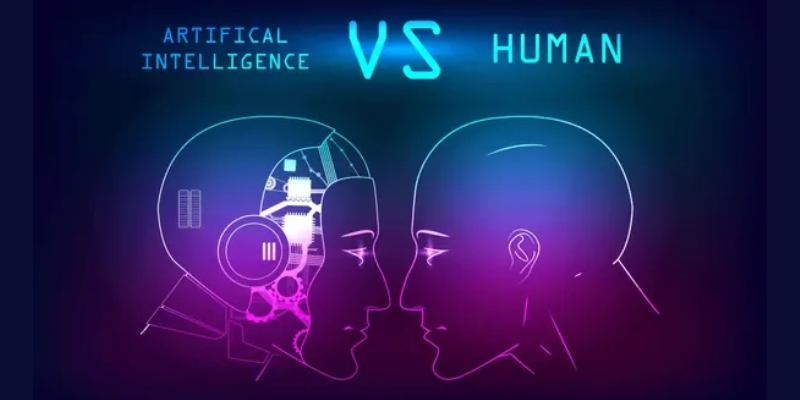
Artificial intelligence (AI), a game-changing force reshaping businesses in the era of fast technological growth, lifestyles, and even the way we think. From personal assistants like Siri to self-driving cars and recommendation systems, AI is becoming an integral part of our lives. But despite its powerful capabilities, how does it truly compare to the human brain? Recognizing the distinctions and parallels between AI and human intelligence is critical for making informed decisions about its use, limitations, and potential.
What is Human Intelligence?
Human intelligence is a multifaceted capability that allows individuals to learn from experience, adapt to new situations, understand complex ideas, and apply knowledge to manipulate their environment. It encompasses emotional intelligence, problem-solving, reasoning, creativity, and the ability to learn abstract concepts. Unlike AI, human intelligence is biologically rooted and shaped by consciousness, experiences, genetics, and social interactions.
This distinction is foundational in the Artificial Intelligence Course in Trivandrum, where students analyze the neurological and psychological traits that AI attempts to replicate.
What is Artificial Intelligence?
Conversely, artificial intelligence describes how robots, especially computer systems, may mimic human cognitive processes. These systems are made to carry out operations like speech recognition, pattern recognition, problem solving, and decision making that often call for human intellect. AI works by processing massive amounts of data through algorithms and models that learn over time—what we refer to as machine learning.
Key Differences Between AI and Human Intelligence
1. Learning and Adaptability
Humans learn through a combination of experience, observation, and abstract reasoning. AI learns through data and repeated training iterations. While AI can process more data than a human can ever manage, its adaptability is limited to the scenarios for which it is trained. Humans can apply past experiences to new and unfamiliar problems, which AI struggles to do unless specifically programmed.
2. Creativity and Innovation
Creativity is one of the most significant differences between AI and human intelligence. While AI can generate content (such as music, text, or art) using patterns from existing data, it does not truly create or innovate. Humans can imagine new concepts, develop original theories, and think outside the box. This human capability is what drives scientific breakthroughs, artistic masterpieces, and revolutionary inventions.
The Artificial Intelligence Course in Salem highlights this gap by comparing AI-generated outputs with human creativity, encouraging students to explore AI-assisted tools without losing the human touch.
3. Emotional and Social Intelligence
AI lacks emotional intelligence. Although it can simulate conversational behavior or recognize facial expressions, it does not experience emotions or empathy. Human intelligence involves an understanding of emotions—our own and others’—which plays a crucial role in communication, leadership, and collaboration.
4. Decision-Making
Where AI and Human Intelligence Intersect
While AI and human intelligence are distinct, they complement each other in many areas. For example, AI excels at handling repetitive and data-heavy tasks, freeing up humans for creative and strategic thinking. In the medical field, AI can analyze scans and patient records to identify diseases more quickly, while doctors use their experience and judgment to determine the best course of action.
Such real-world applications are thoroughly analyzed in the Artificial Intelligence Course in Pune, equipping learners to work at the intersection of machine efficiency and human insight.
Limitations and Ethical Considerations
Despite AI’s rapid development, it has its limits. It cannot understand the deeper meaning of language the way humans can, nor can it fully comprehend context, culture, or emotion. Furthermore, the use of AI raises serious ethical issues, such as job displacement, surveillance, data privacy, and bias in decision-making.
The Future of Intelligence: Collaboration, Not Competition
The future is not about AI replacing humans but rather augmenting human capabilities. By combining AI’s efficiency with human insight, creativity, and empathy, we can create powerful partnerships that drive innovation and solve global challenges.
AI and human intelligence are both remarkable in their own ways. While AI can process data at incredible speeds and recognize patterns beyond human capacity, it lacks the depth, consciousness, and empathy that define human thought. Understanding a difference between the two allows us to use AI as a valuable tool rather than a substitute.
To stay relevant in today’s tech-driven world, professionals must upskill continuously. Enrolling in an Artificial Intelligence Course in Trichy empowers learners to explore real-world AI applications and build industry-ready expertise.
Also Check: How Does AI Improve Real-Time Data Processing?
